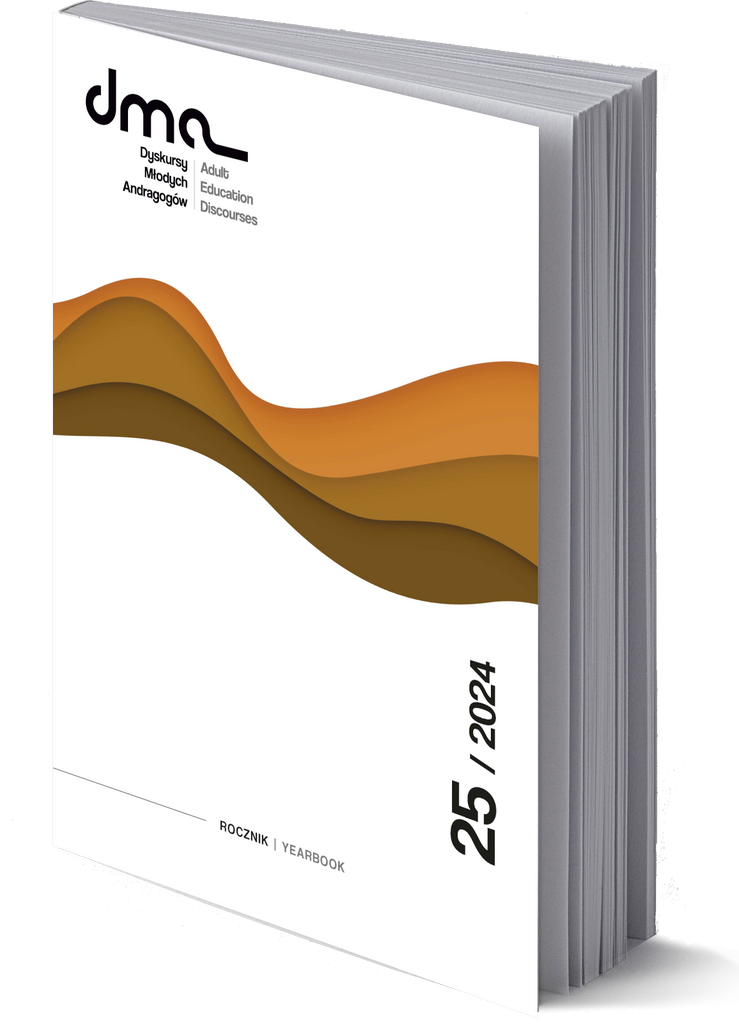Abstrakt
In my paper, I attempt to describe and interpret my own academic identity by focusing on my (auto)biographical and auto-ethnographic trajectory as a researcher and participant in academic culture, shaped at the boundaries of disciplines and academic institutions in a semi-peripheral country such as Poland. In the first part of the text, referring to Wallerstein’s concept of worlds-systems, I present the paradigmatic changes taking place in the discipline I practice – cultural anthropology –
since the 1990s to the present day in conjunction with the pressures on the academia of non-English--speaking peripheral and semi-peripheral countries from English-speaking core countries, in order to reveal the biographical experience of the place of my own academic enculturation in a traditional university (ethnology at AMU), shaping the academic culture of which I am a user/bearer. In the following part of the paper, I analyse the relevance for the shift in my biography as a researcher and academic teacher of taking up a position in a specific academic environment and institution – in a Wrocław-based non-public university with academic aspirations (ULS) and the importance of the experience of being part of the research networks of the ESREA organization. In the final section of the essay, I focus on reconstructing how educational work with so-called non-traditional students, focused on their undertaking explorations within their own culture through various techniques of the ethnographic method, redefines my research and teaching practices and shapes my current academic identity.
Bibliografia
Baer, M. (2006) O antropologii, polityce i tożsamości. Zaproszenie do dyskusji. In: M. Brocki, K. Górny & W. Kuligowski (eds.) Kultura profesjonalna etnologów w Polsce. Wrocław: Wydawnictwo Uniwersytetu Wrocławskiego, 11-37.
Buchowski, M. (2005) Correspondence: Reply to Michał Buchowski. Anthropology of East Europe Review, 23(1), 198-200.
Conrad, J. (2007) Heart of Darkness. London: Penguin Classics.
Cervinkova, H. (2012) Postcolonialism, postsocialism and the anthropology of east-central Europe. Journal of Postcolonial Writing, 48(2), 155-163.
de Certeau, M. (1984) The practice of everyday life. London: Penguin Classics.
Geertz, C. (1973) The Interpretation of Cultures. New York: Basic Books.
Godlewski, G., Kolankiewicz, L., Mencwel, A. & Rodak, P. (eds.) Antropologia kultury. Zagadnienia i wybór tekstów. Wiedza o kulturze 1. Warszawa: Wydawnictwo Uniwersytetu Warszawskiego.
Gołębniak, B.D. (2021) Refunctioning and Extending Ethnographic Methods of Data Collection and Analysis in Educational Action Research. Przegląd Badań Edukacyjnych (Educational Studies Review), 35(2), 275-290.
Gołębniak, M. (2001) Indo-Fidżyjczycy. Przeobrażenia tożsamości grupy hinduskiej na Fidżi [niepublikowana praca magisterska](Indo-Fijians. Transformations of Indian group identity in Fiji. [Unpublished M.A. thesis prepared under the scientific supervision of Zbigniew Jasiewicz). Poznań: Uniwersytet im. Adama Mickiewicza w Poznaniu.
Gołębniak, M. (2009a) Zmiana(y) i pamięć w diasporze ofiar – mniejszość grecka we Wro cławiu. In: K. Górny & M. Marczyk (eds.) Antropologiczne badania zmiany kulturowej. Spo-łeczno-kulturowe aspekty transformacji systemowej w Polsce. Wrocław: Katedra Etnologii i Antro pologii Kulturowej Uniwersytetu Wrocławskiego, 193-202.
Gołębniak, M. (2009b) Learning diasporic identity: The case of Greek Political Refugees in Lower Silesia. In: R. Evans (ed.) Learning Landscapes between the mainstream and the margins 2. Duisburg: Nisaba Verlag, 65-78.
Gołębniak, M. (2016) Dzieci z rozbitego statku. Studium etnograficzno-biograficzne diaspory greckiej w Polsce. Wrocław: Wydawnictwo Naukowe Dolnośląskiej Szkoły Wyższej.
Gołębniak, M. (2017) Antropologia i etnografia edukacyjna – na pograniczu dyscyplin. Forum Oświatowe, 29, 2(58), 45-60.
Gołębniak, M. (2022) Uchodźstwo, migracje i pomaganie w nauczaniu antropologii kulturowej w szkole wyższej – uczenie (o) (do) inności. In: E. Kurantowicz (ed.) Uchodźcy pośród nas. Pomaganie w perspektywie interdyscyplinarnej.Wrocław: Wydawnictwo Naukowe Dolnośląskiej Szkoły Wyższej, 193-200.
Gołębniak, M. & Starnawski, M. (eds.) (2014) “Multiculturalism” today: aspirations, realities and crisis debates. International Conference Proceedings – ESREA Network on Migration, Ethnicity, Racism and Xenophobia. Wrocław: University of Lower Silesia.
Hann, C. (2005) Correspondence: Reply to Michał Buchowski. Anthropology of East Europe Review, 23(1), 194-197.
Jasiewicz, Z. (2006) Etnolodzy i etnologia polska przełomu XX i XXI wieku. W poszukiwaniu tożsamości zbiorowej. In: M. Brocki, K. Górny & W. Kuligowski (eds.) Kultura profesjonalna etnologów w Polsce. Wrocław: Wydawnictwo Uniwersytetu Wrocławskiego, 11-37.
Ligus, R. (2019) “We Are the Poles from Former Yugoslavia.” Transformation Processes Shifted in Time – The Biographical Perspective. Qualitative Sociology Review, 15(4), 96-111.
Marcus, G. & Fisher, M. (1986) Anthropology as Cultural Critique. Chicago: The University of Chicago Press.
Nowicka, E. (2008) Hermes, Odyseusz i greckie powroty do domu. Kraków: Zakład Wydawniczy Nomos.
Wagner, R. (2004) Wynalezienie kultury. In: M. Kempny & E. Nowicka (ed.) Badanie kultury. Elementy teorii antropologicznej. Warszawa: Wydawnictwo Naukowe PWN, 59-72.
Walford, G. (2009) For ethnography. Ethnography and Education, 4(3), 271-282.
Wallerstein, I. (2004) World-Systems Analysis: an Introduction. Durham (NC): Duke University Press.
Wojecki, M. (1989) Uchodźcy polityczni z Grecji w Polsce, 1948-1975. Jelenia Góra: Karkonoskie Towarzystwo Naukowe.

Utwór dostępny jest na licencji Creative Commons Uznanie autorstwa 4.0 Międzynarodowe.
Copyright (c) 2024 Dyskursy Młodych Andragogów

 /
/  Język
Język
